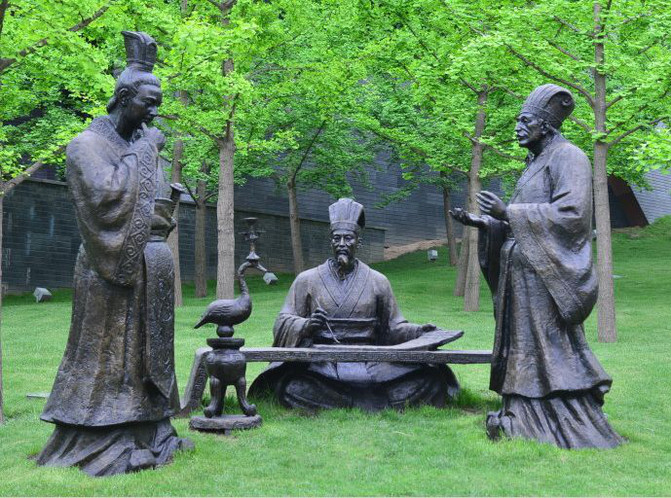Xi'an on the ground and Chang' an on the ground. This city wants to keep a low profile but its strength does not allow it.
It is said that the busiest thing to build a subway in Xi'an is not the construction team but the archaeological team. Half of Chinese history is buried in the Qinling Mountains, and cultural relics can be dug up with a random hoe in Xi'an... Facts have proved that these words are not groundless. Two days ago, the ruins of the Qin Shi Huang Government Hall were discovered in Shaanxi and became popular again. This is the Lanchi Palace where Jing Ke assassinated the King of Qin.

In Xi'an, you can easily encounter the place where historical stories in books take place. In the Qin Second Mausoleum Site Park in Qujiang, people can appreciate the Qin knowledge buried deep underground. Hu Hai, the Second King of Qin, was the youngest son of Qin Shi Huang. After the death of Qin Shi Huang, the Second King reigned for four years and was later killed by Zhao Gao and buried here. The Qin Second Mausoleum Ruins Park is mainly divided into two major sections: the ruins area and the exhibition hall area. The buildings in the ruins area are all historical buildings, such as mountain gates, halls, tombs, etc. The current buildings are all built on the basis of protection and restoration on the basis of the original ruins. In the Qin Shang Museum, the main historical events experienced by Qin II are recorded, connecting the stories that occurred throughout the Qin Dynasty. The museum is divided into 2 floors and 8 major scenes. Historical relics such as murals and bronzes record the vicissitudes of the Qin civilization from its prosperity to its decline. The museum also uses digital technology, VR technology and other technical means to transform the cold cultural relics into more warm, innovative technological visual and audible interesting exhibition forms break people's boring stereotypes of traditional museums, allow cultural relics to enter the audience, and truly let people appreciate the connotation of Qin culture.

The museum also combines images to simulate scenes such as "The Second King ascended the throne" and "Burning the Xianyang Palace", which has a strong feeling of bringing visitors back to the Great Qin Empire. The museum three-dimensionally displays the prosperity and decline of a dynasty to the world. It is now vividly displayed in front of your eyes, as if it takes people to travel through thousands of years.

There is the same excitement outside the museum as the museum. The tomb of Hu Hai of the Second Qin Dynasty is different from the tall and majestic imperial tomb in people's impression. The existing soil of Hu Hai's tomb is 5 meters high and 15 meters in diameter. It is located in a corner of Qujiang River and has a secluded environment. Historical relics, buildings with Qin Feng elements, etc. can be seen everywhere in the park. Antique artworks such as Qin Dynasty copper chimes, warning bells, and Qin helmets in the park are carefully crafted to restore the true appearance of cultural relics. Here you can also find sources of some proverbs, idioms and stories related to Qin, such as Zhao Gao's monopoly of power, the unification of weights and measures, etc.

Today's Qin Second Mausoleum Site Park integrates the natural environment, cultural exhibitions, and garden construction, and is committed to site protection. It is now the closest Qin Culture Site Park in the urban area of Xi'an City, allowing visitors to experience the charm brought by history and culture. Enjoy the freshest urban garden feast.
Previous Article:This temple in downtown Xi'an hides more than 1700 years of history and is worth a visit.
